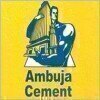Filter interviews by
Orient Cement Assistant Manager Technical Interview Questions and Answers
Orient Cement Assistant Manager Technical Interview Experiences
1 interview found
I applied via Naukri.com and was interviewed before Nov 2021. There were 2 interview rounds.

(3 Questions)
- Q1. Technical knowledge of Cement
- Q2. Relative density of Aggregate
- Ans.
Relative density of aggregate refers to the ratio of its mass to the mass of an equal volume of water.
It is also known as specific gravity of aggregate.
It helps in determining the strength and durability of concrete.
The relative density of normal weight aggregates ranges from 2.4 to 2.9.
Lightweight aggregates have a relative density of less than 2.4.
Heavyweight aggregates have a relative density greater than 2.9.
- Q3. Your personal Contact at temples
Interview Preparation Tips
- Technical Services
Interview questions from similar companies

Assistant Manager Technical Interview Questions & Answers
Infra.Marketposted on 20 Sep 2023
I applied via Campus Placement and was interviewed before Sep 2022. There were 2 interview rounds.
(2 Questions)
- Q1. For RMC they will ask about basic tests and code books
- Q2. Problems faced in RMC
- Ans.
Problems faced in Ready Mix Concrete (RMC) production and delivery
Quality control issues leading to inconsistent concrete strength
Logistical challenges in transporting concrete to construction sites
Equipment breakdowns causing delays in production
Environmental concerns related to waste disposal and water usage
High initial setup costs for RMC plants
(2 Questions)
- Q1. Tell me about yourself
- Q2. Why do you want to leave your present company
Interview Preparation Tips
- Concrete
- Excel

I applied via Shine and was interviewed before May 2021. There was 1 interview round.
(3 Questions)
- Q1. Tell me about yourself, current updates, family background, technical
- Q2. Technical tax questions
- Q3. Future inspiration and committement
Interview Preparation Tips

I applied via Naukri.com and was interviewed in Feb 2021. There were 3 interview rounds.
Interview Questionnaire
1 Question
- Q1. Only general questions asked about work profile.
Interview Preparation Tips

I appeared for an interview in Jul 2020.
Interview Questionnaire
1 Question
- Q1. Process parameters, fan flow calculation quality related questions
Interview Preparation Tips
Process parameters flow calculation etc.

Assistant Manager Interview Questions & Answers
Nuvoco Vistasposted on 23 Nov 2019
Interview Questionnaire
1 Question
- Q1. Questions related to current job profile, achievements. How will do our best job. Questions related to current market environment, where have I worked.
Interview Preparation Tips
So, you need to stay calm and should apply presence of mind. Please go through the job description thoroughly word-by-word and recheck your resume to ensure that you are a best-fit for the position.

I applied via Naukri.com and was interviewed before Feb 2021. There were 3 interview rounds.

(2 Questions)
- Q1. Why are you looking for a change?
- Q2. Why you select job locations so far
Subject expert question
Interview Preparation Tips
- Feel free
- Listing carefully
- Replying employer's questio
- Confidently answered
Read it employers JD carefully.
Avoid more talk in interview.
Answered point to point topics.

I applied via Referral and was interviewed before Oct 2020. There were 3 interview rounds.
Interview Questionnaire
3 Questions
- Q1. Past Experience as stated on my resume.
- Q2. Different maintenance related problems faced and solutions provided
- Ans.
Maintenance problems and solutions
Equipment breakdowns - regular maintenance checks and repairs
Lack of spare parts - inventory management and ordering in advance
Inefficient processes - process optimization and automation
Safety hazards - regular safety inspections and training
Environmental concerns - proper disposal of hazardous waste
Budget constraints - prioritization and cost-effective solutions
- Q3. Project related in depth questions on domain of my working as stated iny resume
Interview Preparation Tips
Be confident and do not over explain as all of the persons taking interviews in JSW Cement are rich in experience of their domain.

I applied via Recruitment Consultant and was interviewed in Oct 2020. There was 1 interview round.
Interview Questionnaire
1 Question
- Q1. Technical and behavioural questions
Interview Preparation Tips

I applied via Naukri.com and was interviewed before Feb 2021. There were 2 interview rounds.

(1 Question)
- Q1. Experience related questions only
Interview Preparation Tips
Orient Cement Interview FAQs
Tell us how to improve this page.
Orient Cement Interviews By Designations
- Orient Cement Assistant Manager Interview Questions
- Orient Cement Senior Engineer Interview Questions
- Orient Cement CCR Operator Interview Questions
- Orient Cement Junior Officer Interview Questions
- Orient Cement Geologist Interview Questions
- Orient Cement Technical Engineer Interview Questions
- Orient Cement Sales Officer Interview Questions
- Orient Cement System Security Interview Questions
- Show more
Interview Questions for Popular Designations
- Technical Lead Interview Questions
- Technical Support Engineer Interview Questions
- Technical Specialist Interview Questions
- Member Technical Staff Interview Questions
- Technical Engineer Interview Questions
- Technical Analyst Interview Questions
- Technical Consultant Interview Questions
- Technical Architect Interview Questions
- Show more
Interview Questions from Similar Companies
Orient Cement Assistant Manager Technical Reviews and Ratings
based on 1 review
Rating in categories
|
Assistant Manager
104
salaries
| ₹5.5 L/yr - ₹14 L/yr |
|
Senior Sales Officer
78
salaries
| ₹5.5 L/yr - ₹11.1 L/yr |
|
Area Sales Manager
75
salaries
| ₹7.5 L/yr - ₹14.1 L/yr |
|
Senior Engineer
55
salaries
| ₹4 L/yr - ₹11 L/yr |
|
Deputy Manager
55
salaries
| ₹7.7 L/yr - ₹18.5 L/yr |

JK Cement

ACC

Ambuja Cements

Nuvoco Vistas
- Home >
- Interviews >
- Orient Cement Interview Questions >
- Orient Cement Assistant Manager Technical Interview Questions
















